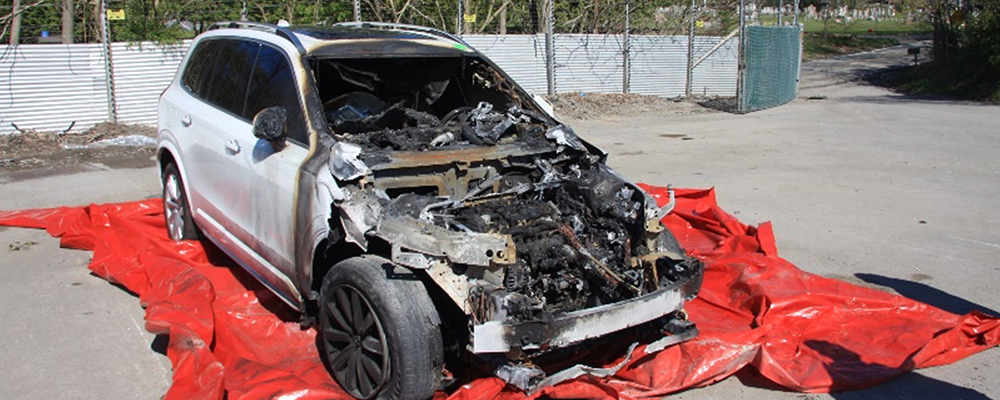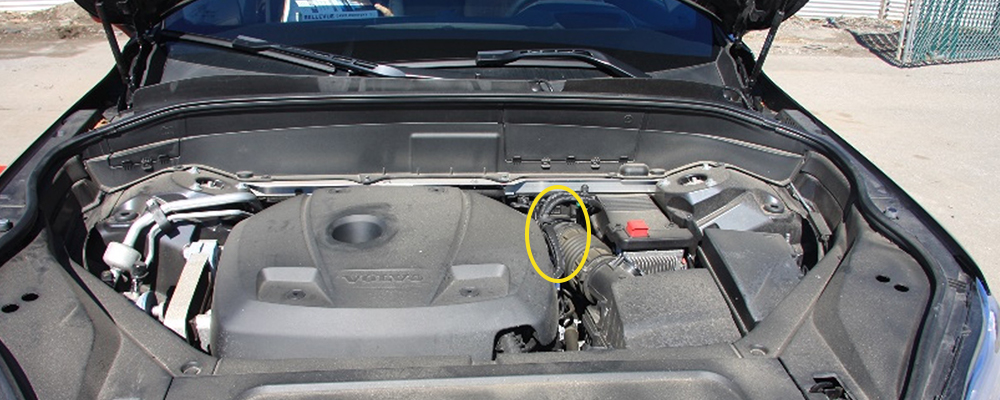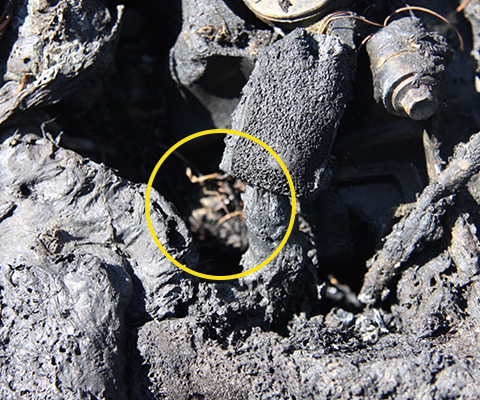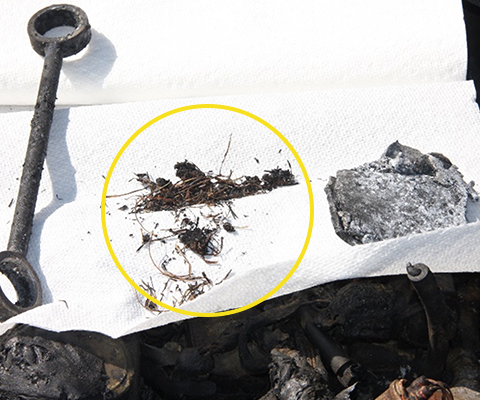We were asked to investigate the cause of an engine compartment fire in a Volvo XC90. The owner purchased the pre-owned vehicle and returned it to the selling dealer for a recall associated with a coolant bleeder hose that could leak coolant onto the catalytic converter and/or its associated heat shield, causing a fire once the vehicle was parked (NHTSA Recall 19V308). In addition to this recall, the dealer had replaced the engine pistons and rings to address an excessive oil consumption issue. Approximately 3 weeks after this latest work was completed, an engine compartment fire occurred while the owner was operating the vehicle.
As the owner was driving, she noticed an increase in brake pedal effort required to slow the vehicle. Thus, she pulled into a parking lot to investigate. Before she exited the vehicle, a bystander informed her that her that her vehicle was on fire. The fire department responded to the scene and extinguished the fire, but there was significant direct fire damage to the engine compartment, as may be seen in the Photograph below.

From patterns in the engine compartment, the fire origin and cause (O&C) investigator placed the origin near the left rear of the engine, in the general area of the cooler bleeder hose that was the subject of the recall. This general origin area, as identified on an exemplar vehicle is shown below.

While there was significant fire damage in the reported area of origin, the recall indicated that the risk of fire involved the accumulation of coolant on the catalytic converter that would ignite once the vehicle was stopped after being driven (the exhaust is cooled by air flow as a vehicle is driven, so peak exhaust temperature occurs shortly after the vehicle is stopped and cooling air flow is lost). In this instance, the owner’s description that there was an increase in braking effort while driving suggests the fire compromised the power brake vacuum assist before the vehicle was stopped.
During visual inspection of the vehicle, dried plant material was observed in the area below the area of origin, as shown in the photograph on the left. Excavating this material revealed it to be grass and other common rodent nesting material.


Further examination revealed no evidence of an electrical fault within the area of origin nor any evidence of oil leakage from the engine that may have accumulated and ignited. Therefore, it was concluded that rodent nesting material smoldered and eventually ignited, with the fire rapidly spreading to other nearby combustibles—one of which was the vacuum line to the power brake vacuum booster. This explained the increased braking effort experienced by the owner just prior to discovery of the fire.
An engine compartment fire attributable to rodents is not necessarily a common cause of a vehicle fire. However, in our area of the country, rodents often seek dry, warm areas in the fall and winter months (this particular fire occurred in February). A rodent accumulates nesting material over a period of time, and the nesting material may be present for some time, especially if the vehicle is not frequently driven. On longer drives, however, heating associated with engine operation can be sufficient to cause the nesting material to smolder and ignite. Once a fire is ignited, there is a host of combustible plastics in the engine compartment of a modern automobile that causes the initial fire to rapidly propagate through the engine compartment.
